Affiliate links on Android Authority may earn us a commission. Learn more.
Beeper Mini is the iMessage for Android app we’ve been waiting for
Published onDecember 5, 2023
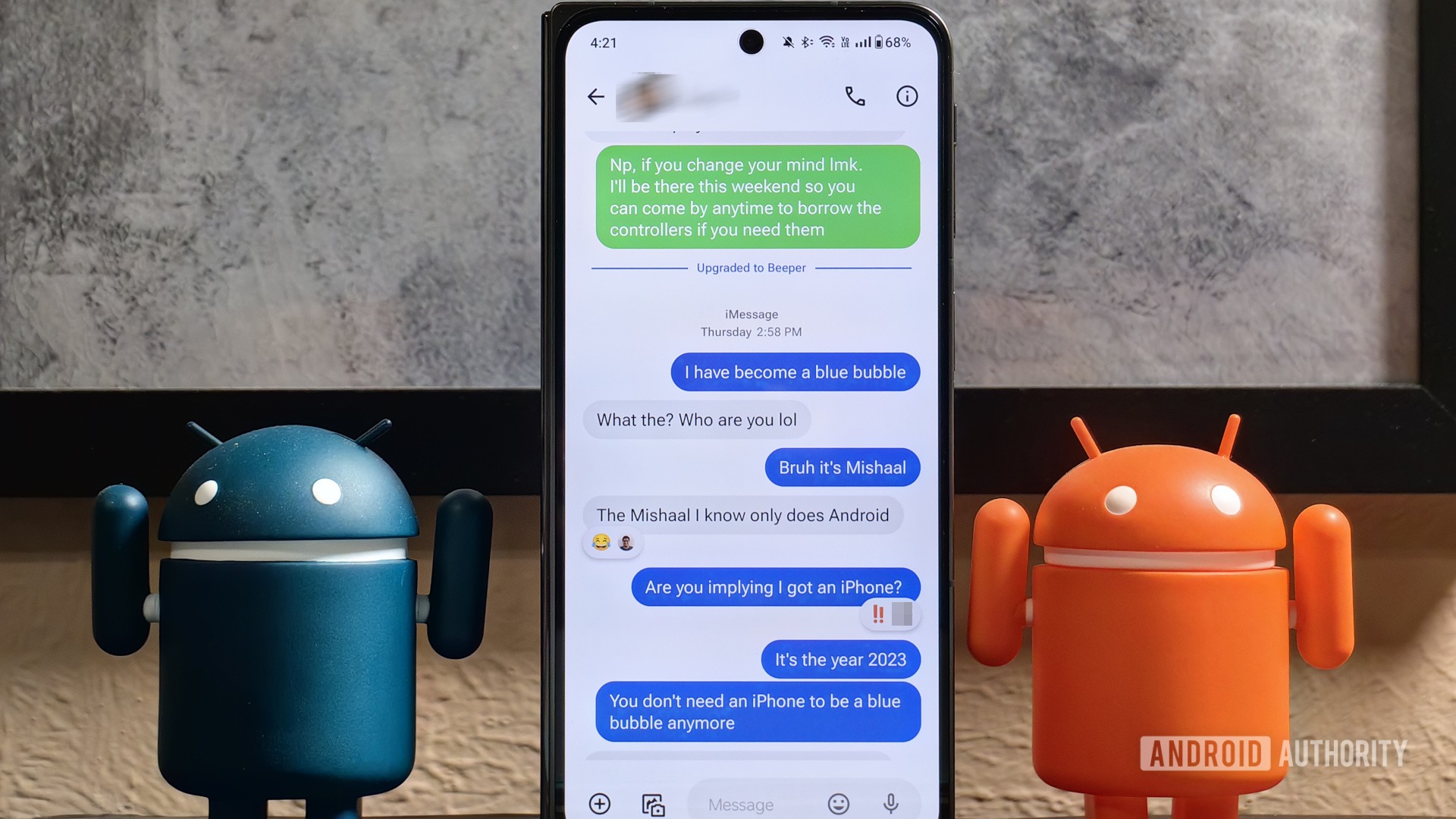
- Beeper Mini brings iMessage to Android without the need to sign in with an Apple ID or run iMessage on a server.
- All you need is your phone number and a Google sign-in to get started.
- After a 7-day trial, the app costs $1.99/month.
Like many of our readers, I use an Android phone as my daily driver, but some of my friends and family members use an iPhone. Because iMessage isn’t available on Android, my messages to them are sent via SMS/MMS, which are shown in Apple’s Messaging app in the oft-derided “green bubble.” As a result, they lose access to many iMessage features, like high-resolution media sharing, reply threads, voice messages, typing indicators, and a lot more. Thanks to Beeper Mini, though, I can finally use iMessage on Android, so my messages to iPhone users will show up in a “blue bubble.”
Beeper Mini is a new app from the folks behind Beeper, a unified chatting and inbox app that brings together the best chat apps under one roof. The original Beeper app supports iMessage among other messaging services, but it requires you to provide Beeper with your Apple ID credentials in order to use iMessage. This is because the service acts as a bridge between your Android phone with the Beeper app installed and a Mac Mini signed into your iMessage account.
Beeper promises that your password isn’t stored, that your messages are encrypted and can’t be read by anyone, and that only iMessage-related permissions are requested. Nothing and Sunbird made similar claims when they announced the Nothing Chats app, but researchers quickly discovered that the app was a security and privacy nightmare, leading to it being pulled shortly after launch. While similar security issues haven’t been found yet in Beeper’s app, there’s still a slight risk inherent in handing over your Apple ID credentials. Even if you do trust Beeper, you need to get an invite to access its app and then set it up from a PC.
The new Beeper Mini app has none of those caveats: You don’t need to provide your Apple ID credentials to use iMessage, you don’t have to sign up for a waitlist to use the app, and you don’t need a PC to set things up. Setting up iMessage on Android through Beeper Mini only takes a few minutes. Just download Beeper Mini from Google Play, tap on “continue with Google” to sign in with Google, grant the app permission to access your SMS conversations and contacts list, and then you’re on your way.
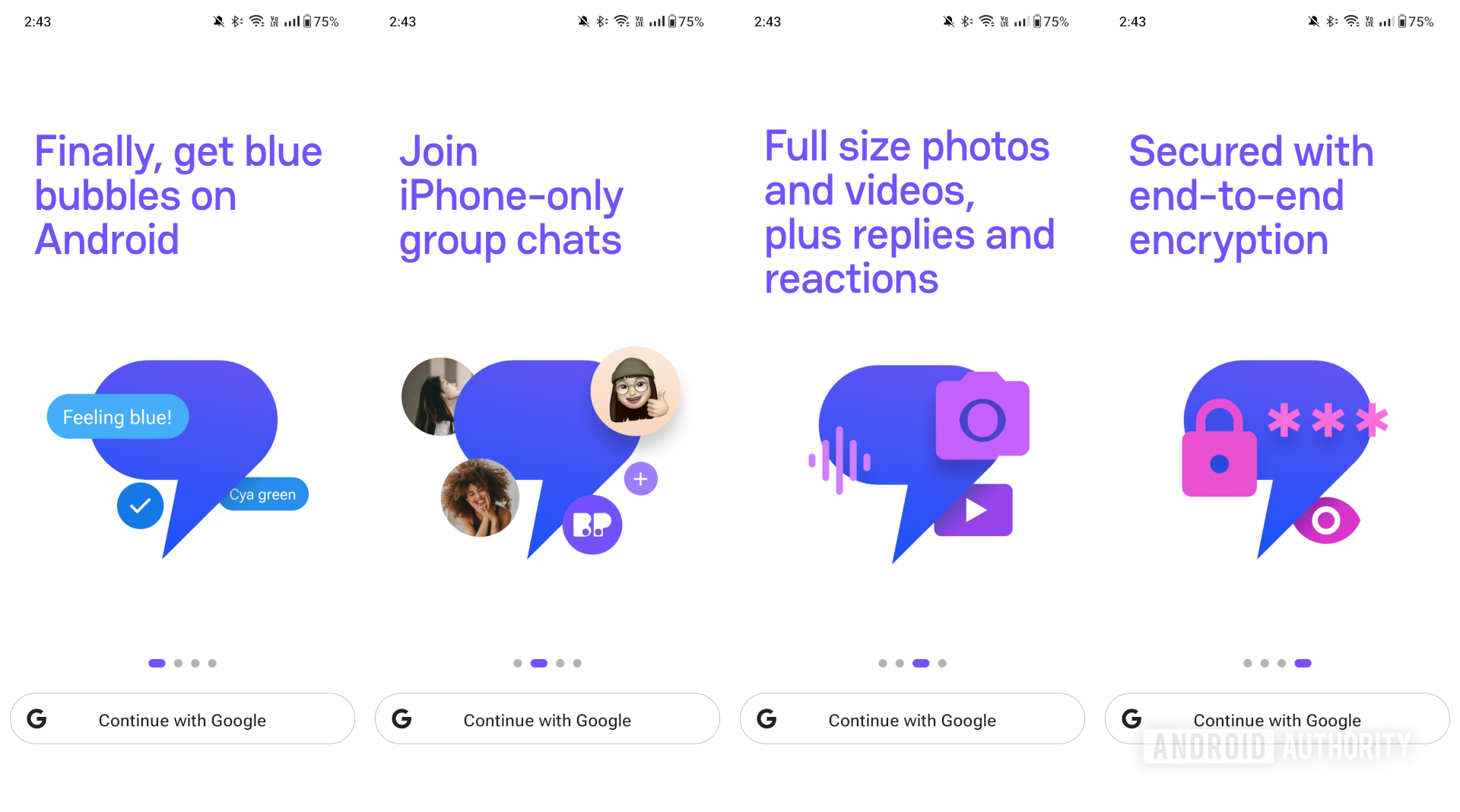
At no point during setup are you forced to sign in to your Apple ID, though, after setup, you can optionally go to the app’s settings, tap “Manage Connection,” select “Connect Apple ID,” and then sign in from there if you want to enable sending/receiving messages from your email address or from your other Apple devices. Beeper Mini says it stores your account credentials locally before sending them to Apple’s servers using encrypted HTTPS requests, but I chose not to sign in since it wasn’t necessary to use iMessage anyway.
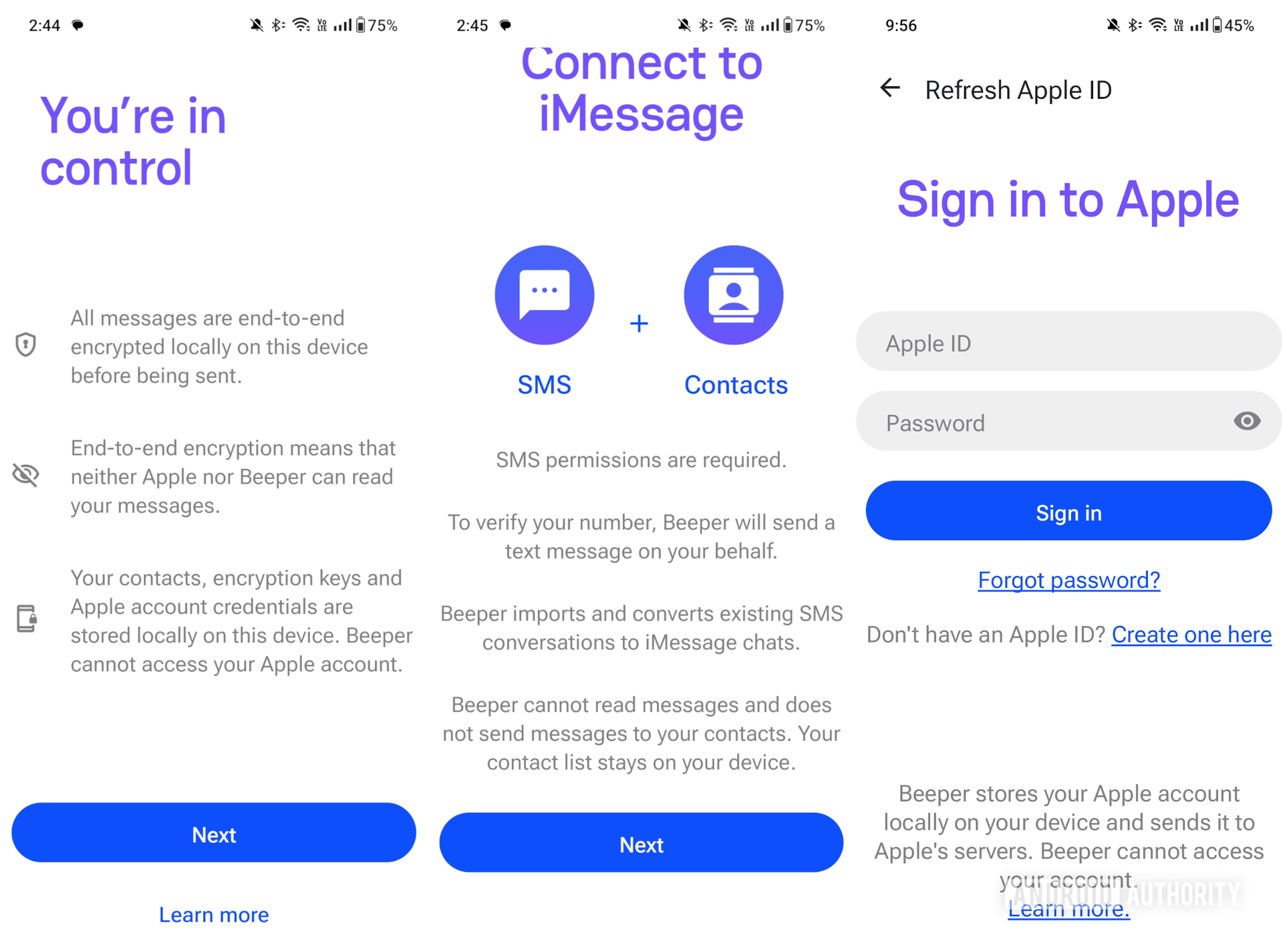
While the need to access your SMS conversations and contacts list is pretty obvious, I was curious why the app asked me to sign in with Google during setup. Beeper explains that this is to register you with the Beeper API Server, which exists to verify your subscription status (more on that later) and give their support team your name and email address so they can help debug any issues you encounter. After signing in with Google, I confirmed via my Google Account settings that Beeper Mini only got access to my name, email address, and profile picture.
Once I finished setting up the app, it seamlessly pulled in my previous SMS conversations with iPhone users and upgraded them to iMessage. These conversations were arranged in a list like most chat apps, though I could pin certain conversations to the top. From the home screen, you can tap the FAB to start a new chat, swipe right to mark a conversation as unread, or swipe left on a conversation to mute it. From the top bar, you can change your display name and profile picture or access the app’s settings, where you can modify the theme, toggle read receipts, mute sounds, toggle push notifications, or connect your Apple ID as previously mentioned.
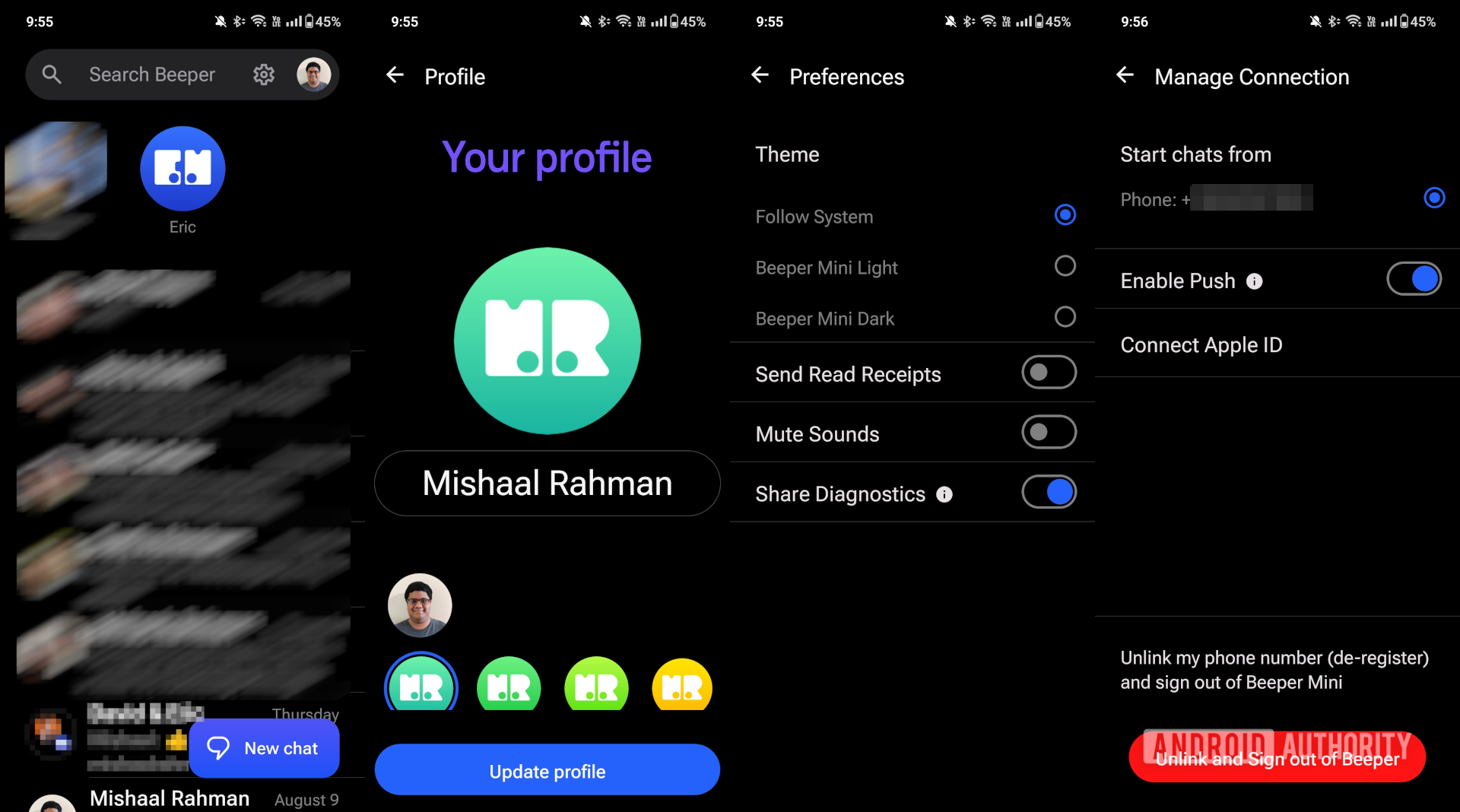
Since Beeper Mini is still in its early stages, there aren’t many other bells and whistles, which is fine since Beeper is focusing on supporting as many iMessage features as possible first before building out support for other features and messaging services. Speaking of which, Beeper Co-Founder Eric Migicovsky told me that Mini will eventually add support for all other messaging services that the original Beeper currently supports. Once that happens, “Mini” will be dropped from its name. To reduce confusion between the two products, the original Beeper app is being renamed to Beeper Cloud.
Right now, though, the app has the “Mini” suffix since it only supports iMessage. While it doesn’t support every iMessage feature at the moment, it does support the important ones, like group chats, high-resolution media sharing, emoji reactions, voice messages, and more. Here’s the list of iMessage features that Beeper Mini currently supports:
- Direct Messages
- Group chats
- High-resolution images and video
- Editing and un-sending messages
- Read receipts
- Typing status
- Tapback emoji reactions
- Reply threads
- Voice messages
- Stickers and GIFs
Beeper says that live location sharing, message effects, and FaceTime calls aren’t supported yet. iMessage games are also not supported, though Beeper says this feature will likely never be supported. I’m personally okay with that, since Beeper Mini still gives me the most important iMessage features I was missing out on before. Here are screenshots that showcase some of these features:
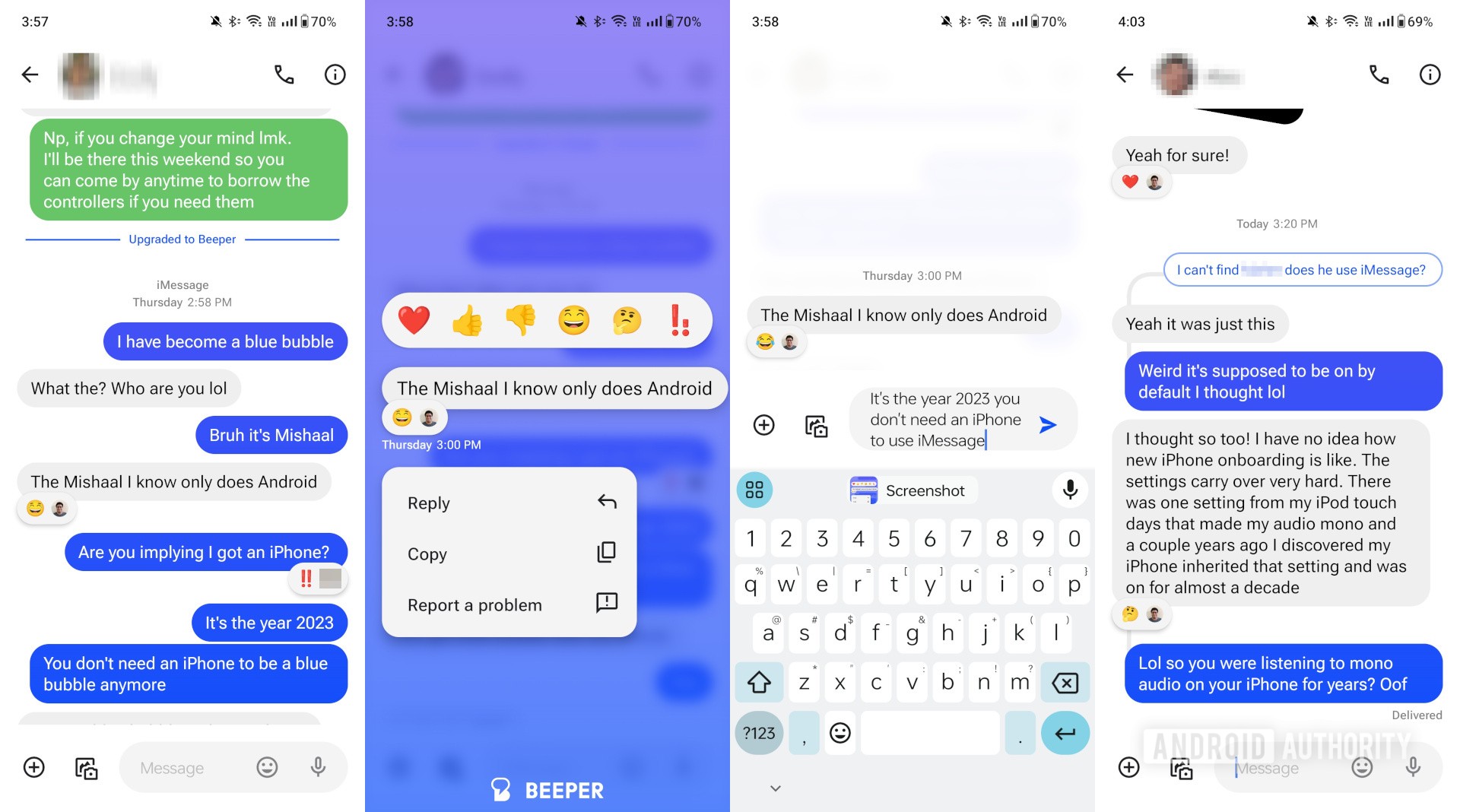
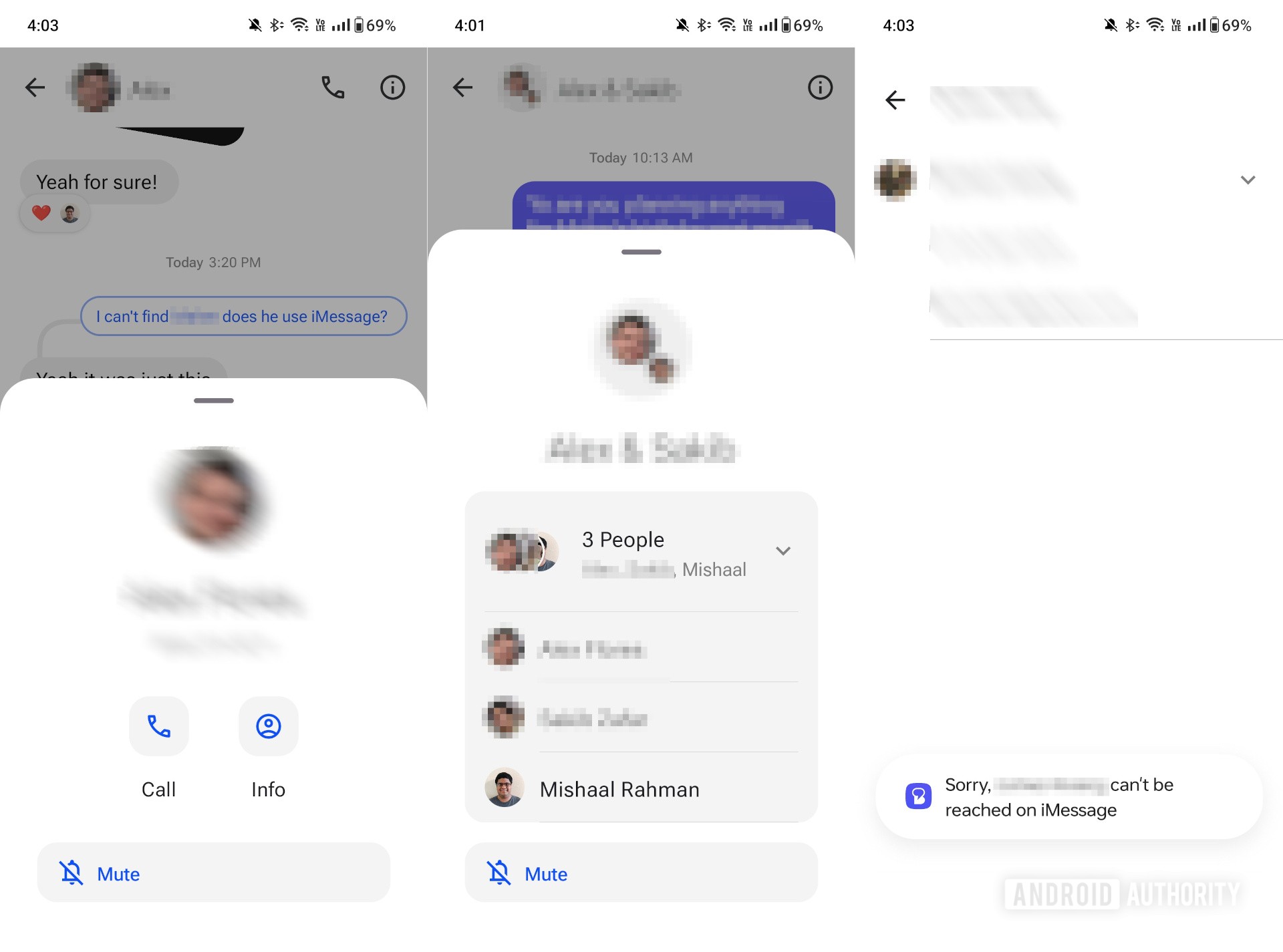
And here are screenshots from an iPhone of some iMessage conversations I started on my Android phone:
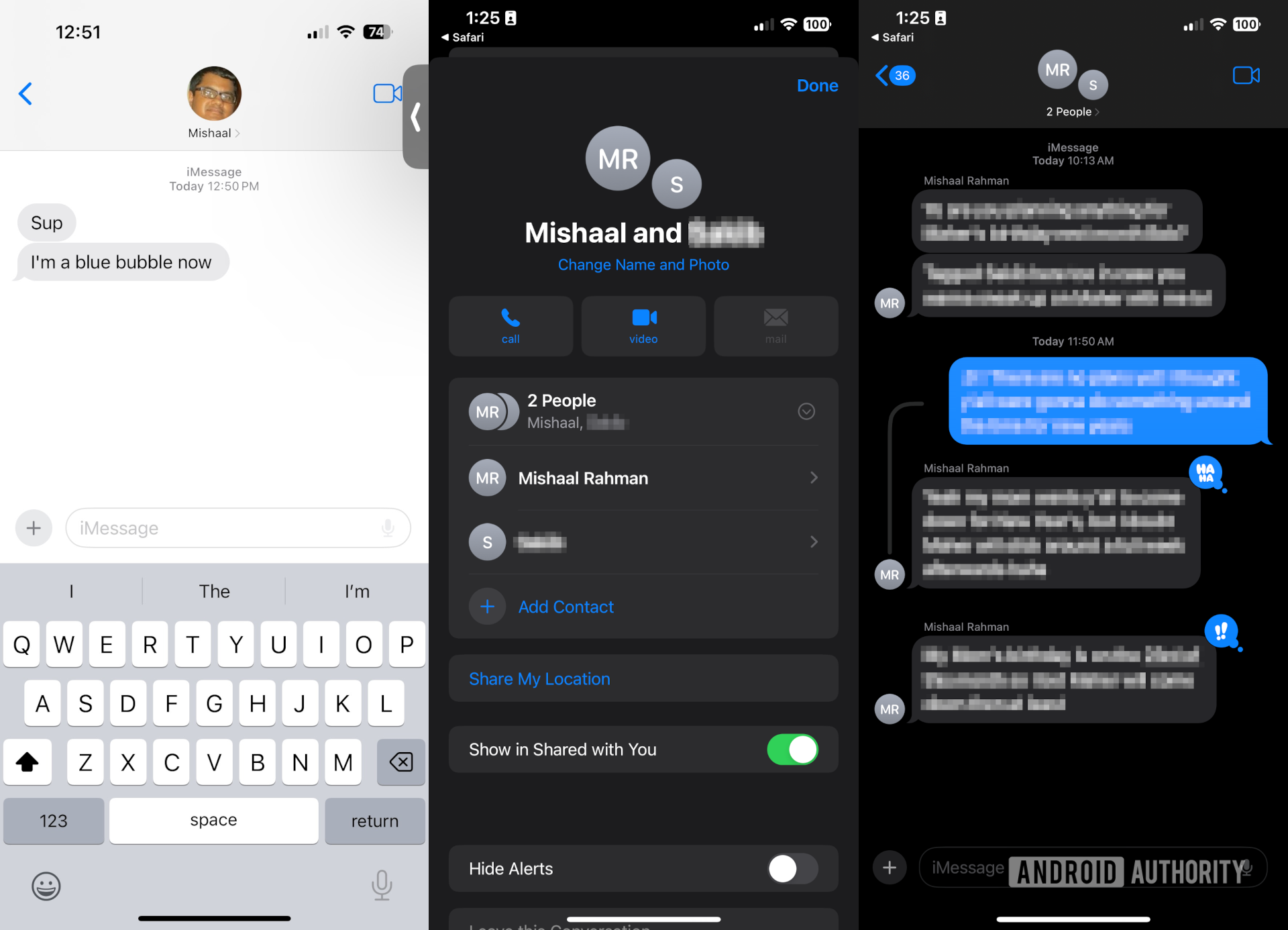
Overall, I’m really happy with the Beeper Mini app so far. Once Apple brings RCS support to its Messaging app sometime next year, I won’t have to use Beeper Mini for all my contacts with an iPhone. However, if I want to avoid the green bubble stigma, I’ll need to stick with Beeper Mini since Apple will still use green bubbles to differentiate Android users. Beeper Mini will only cost me $1.99 per month after my 7-day free trial expires, which I’m happy to pay given the alternatives. Plus, once Beeper Mini adds support for all my other messaging services, I’ll have fewer apps to switch between, though I won’t get my hopes up too much after reading C. Scott Brown’s experiences with Beeper.
What I will get my hopes up for is that Beeper Mini sticks around at least until Apple rolls out RCS support in iOS. Beeper Mini is built on the work of a developer who reverse-engineered iMessage. Apple hasn’t brought iMessage to Android after all these years for a reason, so I doubt they’ll completely overlook this. When I asked Eric Migicovsky about this, he said that he thinks Apple won’t do anything. Apple touts privacy as a key selling point of its ecosystem, Eric pointed out, and Beeper Mini actually makes iPhones more secure by upgrading conversations with Android users from the insecure SMS/MMS standard to the end-to-end encrypted iMessage protocol.
Speaking of encryption, Beeper has taken several steps to gain the trust of security-conscious users. The team published a technical blog post that dives into how the app works, shared a blog post from their developer that explains how iMessage works under the hood, and shared the source code for a Python script that can send and receive an iMessage on any platform. They’re even extending an invitation to security researchers to inspect the network traffic of Beeper Mini and will assist in this effort by providing a special copy of the app with certificate pinning disabled.
Will you be trying out Beeper Mini? Let us know in the poll or comments!